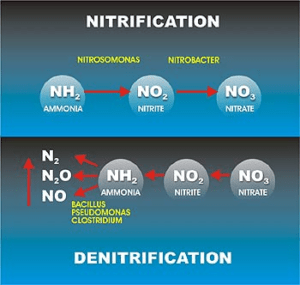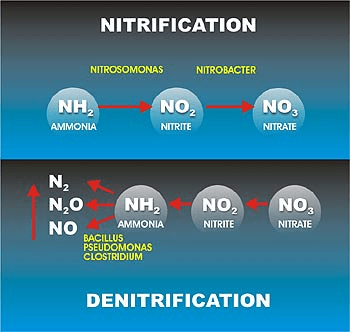Sewage plant treatment & Nitrogen removal process
Sewage plant treatment contains Nutrients are substances essential for growth of humans, plants and animals. Nutrients are taken in by organisms and promote growth. Carbon, nitrogen and phosphorus are essential nutrients to most aquatic organisms. In this blog we will try to understand how to remove nitrogen.
Nitrogen makes up 78 percent of our atmosphere and is the seventh most abundant element on earth. It is a constituent of amino acids, protein, DNA and RNA. Sources of nitrogen in wastewater include anything organic, such as human waste, urea and fertilizers.
Total Nitrogen
Nitrogen exists in several forms. The principal nitrogen types of concern to wastewater treatment are: Total Nitrogen, Total Kejeldahl Nitrogen (TKN), Ammonia, Organic Nitrogen, Nitrate and Nitrite. Concentrations are reported in mg/L, as Nitrogen. The relationships of the various forms are confusing, but important to understand. Total Nitrogen (TN) is the sum of nitrate-nitrogen (NO3-N), nitrite-nitrogen (NO2-N), ammonia-nitrogen (NH3-N) and organically bonded nitrogen. Total Nitrogen (TN) should not be confused with TKN (Total Kjeldahl Nitrogen) which is the sum of ammonia-nitrogen plus organically bound nitrogen but does not include nitrate-nitrogen or nitrite-nitrogen.
Nitrogen removal
Nitrogen may be removed chemically, physically or biologically. It is generally more cost effective to use biological nutrient removal technology in Sewage plant treatment than chemical or physical removal. However, there are other factors to weigh when deciding on a treatment technology, such as solids handling capability and existing mechanical equipment.
Sewage water contains around 40 mg/L of total nitrogen out of which about 60 percent of the influent total nitrogen is ammonia and 40 percent is organic nitrogen. In the aerobic treatment process, most of the organic nitrogen (N2) is changed to ammonia (NH3) in a process known as ammonification. Starting from the house service connection, organic nitrogen begins its transformation to ammonia and ammonium, based on pH and temperature. As the wastewater reaches the treatment plant for processing, some of the organic nitrogen has been converted to ammonia or ammonium through the collection system. Roughly 30 – 40% may remain as organic nitrogen, with about 60 to 70% coming in as ammonia/ammonium.
N2 + 3 H2 -> 2 NH3
Biological nitrogen removal is a two-step process that involves nitrification and denitrification.

Step 1: Nitrification is an oxidizing process that occurs in the presence of oxygen under aerobic conditions using bacteria (often Nitrosomonas) to oxidize ammonia to nitrite, and then using another type of bacteria (often Nitrobacter) to oxidize the nitrite (NO₂) to nitrate (NO₃).
Nitrification is carried out according to the following reactions:
2 NH3 + 3O2 – > 2 NO2 + 2 H+ + 2 H2O
2 NO2- + O2 -> 2 NO3-
OR
Ammonia (NH3) + Oxygen (O2) + Alkalinity + Nitrosomonas = Nitrite (NO2)
Nitrite (NO2) + Oxygen (O2) + Alkalinity + Nitrobacter = Nitrate (NO3)
Step 2: Denitrification is a reducing process that occurs in the absence of oxygen under anoxic conditions using heterotrophic bacteria (usually Pseudomonas) to reduce nitrate to nitric oxide, nitrous oxide and nitrogen gas.
Denitrification is carried out according to the following reaction:
NO3- + CH2O + H+ -> ½ N2O + CO2 + 1½ H2O
OR
Nitrate (NO3) + Organics + Pseudomonas = Nitrogen gas (N2) + Alkalinity
Finally, nitrogen is released into the atmosphere again. The whole process starts over in the Sewage plant treatment after release.
Nutrient removal is an important process in meeting the DENR RA 9275 Clean Water Act under its latest Regulation DAO 2016-08 on general effluent Standard. Avlon Inc, is a leader in nutrient removal technologies with a comprehensive product portfolio and experienced professionals to help you find the best options for new sewage treatment or upgrading your existing sewage treatment plant.
Contact us today to talk about nutrient removal solutions! Avlon Inc is one of the Best Manufacturers & Suppliers in Philippines. We are one of the best in Sewage Treatment Plant, Upgrading the STP, Wastewater Treatment Plant, Dust Collector, Wet Srubber and Biomass Boilers. Visit our website to know more www.avlon-php.com






